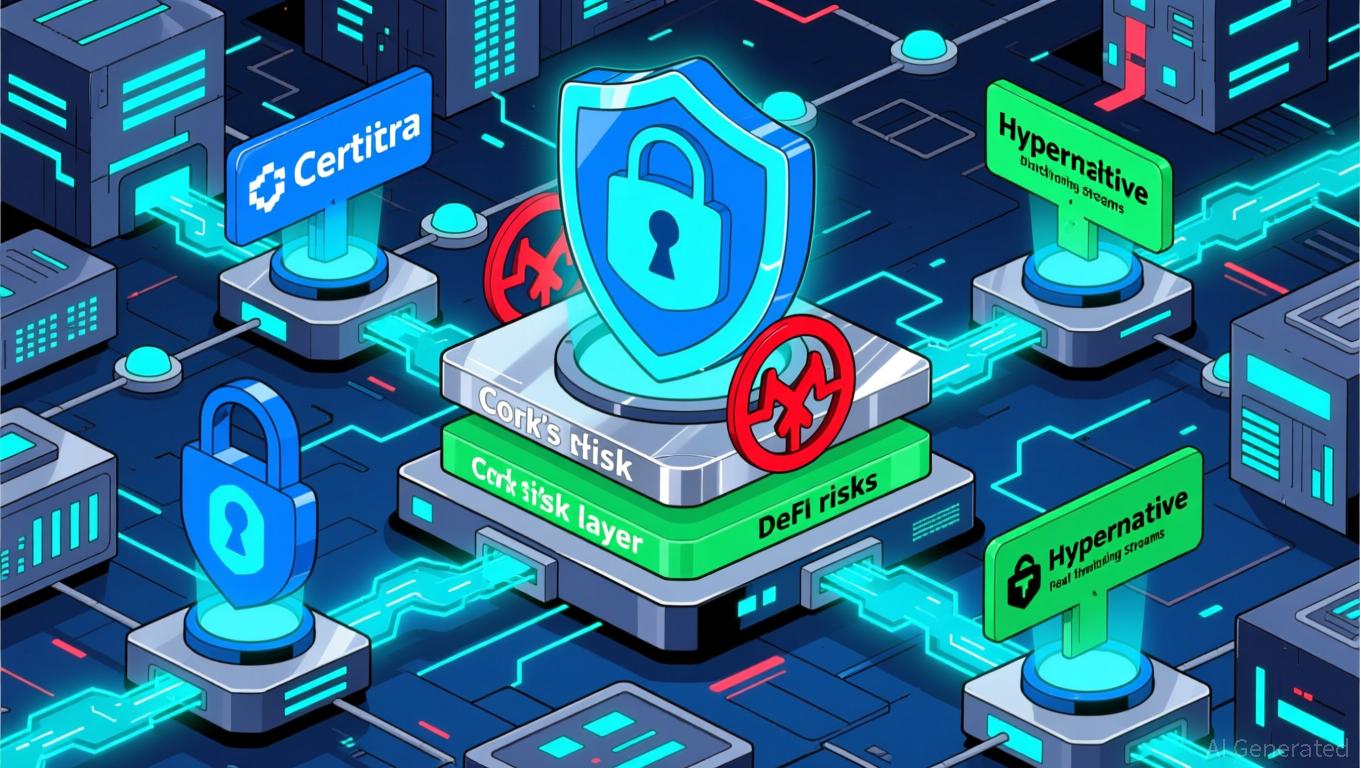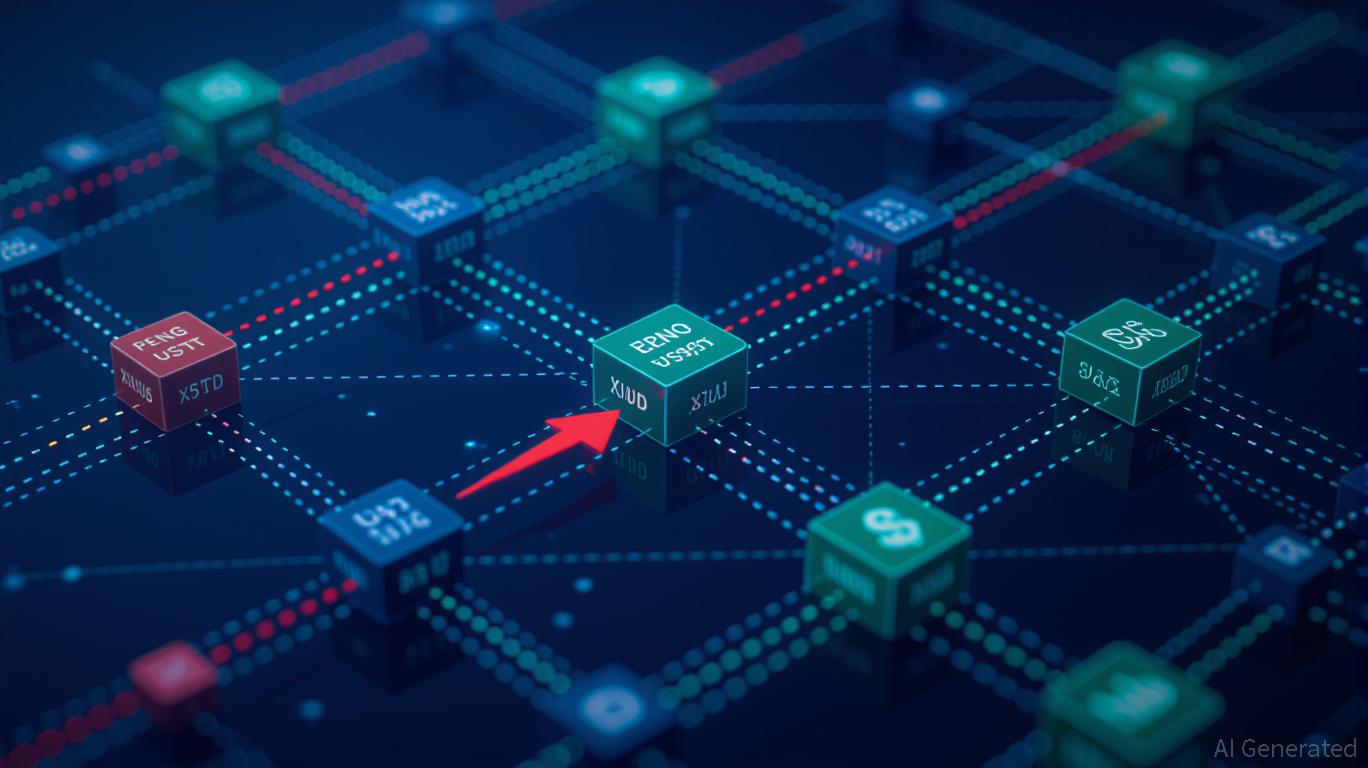Navigating the Dangers of New Cryptocurrency Tokens: Insights Gained from the COAI Token Fraud
- COAI token's 2025 collapse exposed systemic risks in algorithmic stablecoins, centralized governance, and fragmented regulatory frameworks. - xUSD/deUSD stablecoins lost dollar peg during liquidity crisis, while 87.9% token concentration enabled panic selling and manipulation. - Regulatory gaps pre-collapse allowed COAI to exploit loosely regulated markets, but post-crisis reforms like MiCA and GENIUS Act now demand stricter compliance. - Investor sentiment shifted toward transparency, with demand for re
The COAI Collapse: How It Happened and Systemic Weaknesses
The downfall of COAI stemmed from the volatility of its algorithmic stablecoins,
Regulatory challenges added to the strain.

Regulatory Blind Spots and the Road to Harmonization
Prior to the COAI crisis, algorithmic stablecoins operated in a largely unregulated space.
Following the collapse, efforts such as the EU’s MiCA and the U.S. GENIUS Act are driving stricter requirements for capital reserves, independent audits, and consumer safeguards.
Investor Attitudes and Market Response
The COAI incident led to a significant drop in trust toward algorithmic stablecoins and AI-powered DeFi platforms.
This change has also influenced the broader DeFi landscape. Projects lacking transparency or with centralized authority now face increased skepticism, while those adopting open governance and clear reserve disclosures are regaining favor. For investors, sentiment has evolved from a mere market signal to a measure of trust in a project’s core principles.
Best Practices for Vetting New Tokens
After COAI, due diligence now goes far beyond simple KYC procedures. Both founders and investors are encouraged to use Know Your Wallet (KYW) methods,
Operational due diligence (ODD) is just as important. Investors should confirm that funds are properly segregated, verify the legitimacy of funding sources, and ensure governance is robust—for example, by checking for
Conclusion: Creating a Risk-Conscious Crypto Portfolio
The COAI event stands as a warning for those navigating the crypto world. While advancements in AI and DeFi offer great potential, they also require careful examination of technical systems, governance, and regulatory fit. By emphasizing transparency, leveraging AI-powered audits, and keeping pace with regulatory changes, investors can better manage risks and spot projects with lasting strength.
As the sector evolves, the core principle for prudent investing remains: don’t just trust—verify.
Disclaimer: The content of this article solely reflects the author's opinion and does not represent the platform in any capacity. This article is not intended to serve as a reference for making investment decisions.
You may also like
Ripple Commits $4B to Build Crypto’s Bridge to Wall Street
Quick Take Summary is AI generated, newsroom reviewed. Ripple is investing $4 billion to build prime brokerage, custody, and treasury tools for institutional crypto access. The Ripple stablecoin initiative aims to bridge traditional finance and crypto through liquidity and compliance. Ripple’s strategy targets institutional crypto adoption by offering secure, regulated, and efficient infrastructure. With this move, Ripple positions itself as a major connector between Wall Street and the blockchain economy.
SBI Group Invests $200 Million in Evernorth to Strengthen XRP Ecosystem Growth
Quick Take Summary is AI generated, newsroom reviewed. SBI Group invests $200 million in Evernorth, the largest public XRP treasury company. The partnership aims to expand the XRP ecosystem through liquidity, transparency, and blockchain integration. Evernorth plans to scale XRP custody, enhance compliance tools, and strengthen cross-border payments. The deal signals Japan’s growing role in shaping the future of crypto-backed finance globally.References JUST IN: 🇯🇵 SBI Group to invest $200,000,000 into E
Security by Design: Certora, Cork, and Hypernative Set New Benchmarks for DeFi Protection
- Certora, Cork, and Hypernative partner to enhance Web3 security via "security by design" principles, combining formal verification, programmable risk infrastructure, and real-time threat detection. - Certora’s recent collaboration with Balancer prevented a $4.1M loss by identifying critical vulnerabilities in DeFi pools, highlighting the urgency of proactive security measures. - The partnership integrates Certora’s formal verification, Cork’s risk modeling, and Hypernative’s real-time analytics to addres

PENGU USDT Sell Alert and What It Means for Stablecoin Reliability
- Q3 2025 DeFi stablecoin crises exposed fragility of algorithmic models like PENGU USDT amid liquidity shortages and smart contract failures. - PENGU USDT's hybrid collateral framework - blending overcollateralized assets with volatile yield strategies - amplified instability during market stress. - Automated sell signals triggered by interest rate hikes and cross-chain migrations exacerbated depegging, revealing systemic risks in interconnected DeFi protocols. - The collapse highlights urgent need for di
